Abstract
The capture of patient data in a structured format receives increasing attention. Data can be extracted from free text using natural language processing techniques, but it can also be collected in a structured fashion at the time of data entry. The latter has the advantage that completeness and unambiguity can be promoted by offering predefined terms and options for description of findings. The paper discusses two models for supporting structured data entry. In the direct model, there is an immediate relationship between the terms and options for data entry and the structure of the underlying database. In the indirect model, terms and options for data entry are based on a controlled vocabulary and not directly related to the structure in which actual data is represented. Both models have been utilized by ORCA (Open Record for CAre). We discuss the pros and cons of these two models in relation to the type of patient data and the task involved. It is concluded that a strategic combination of both models has more strengths and less weaknesses than the use of each model only.
Full text
PDF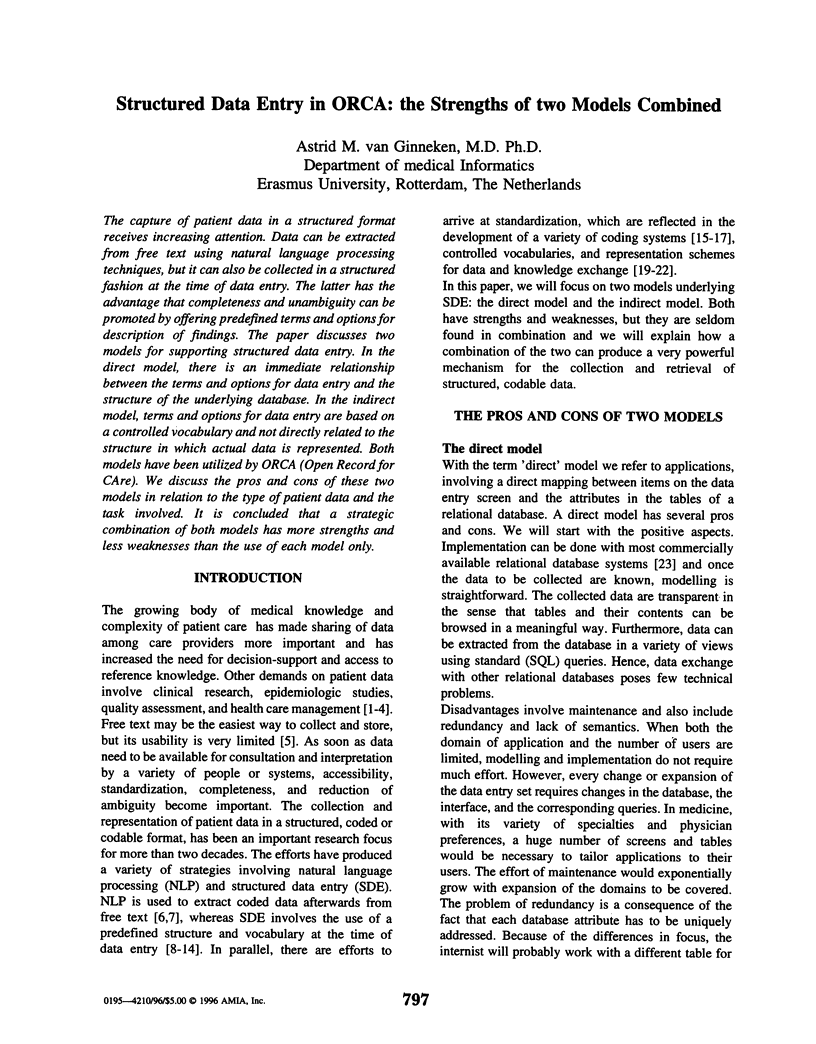
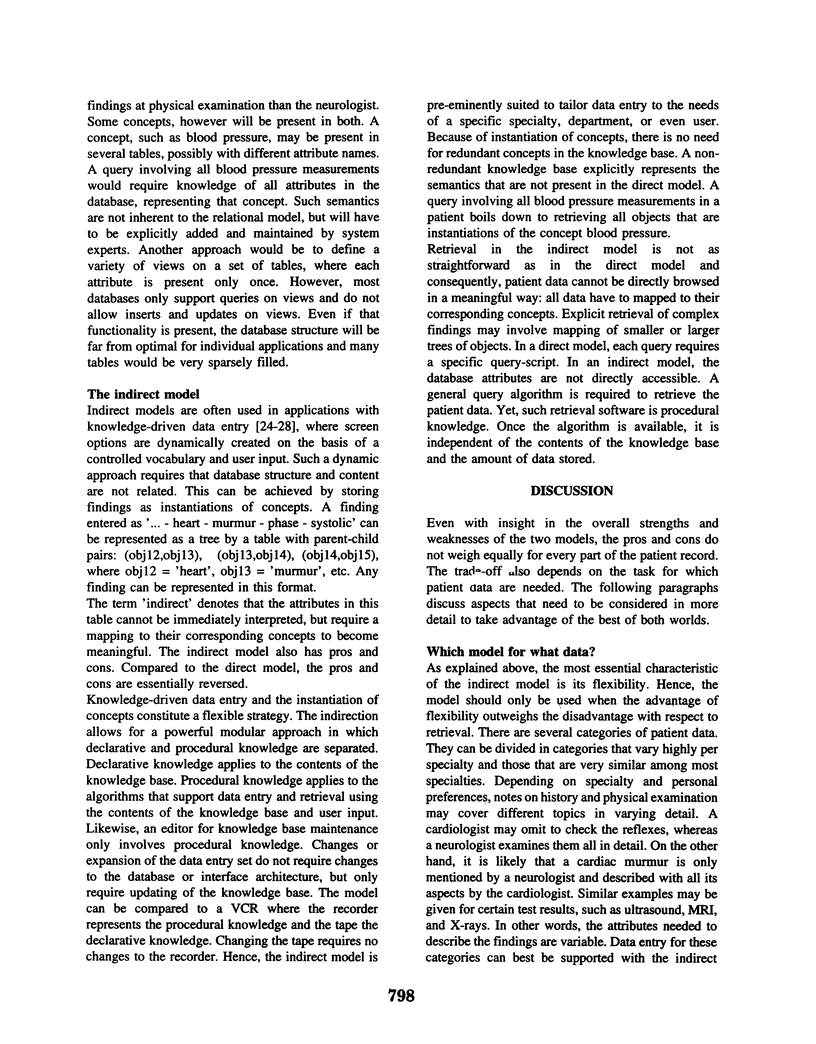
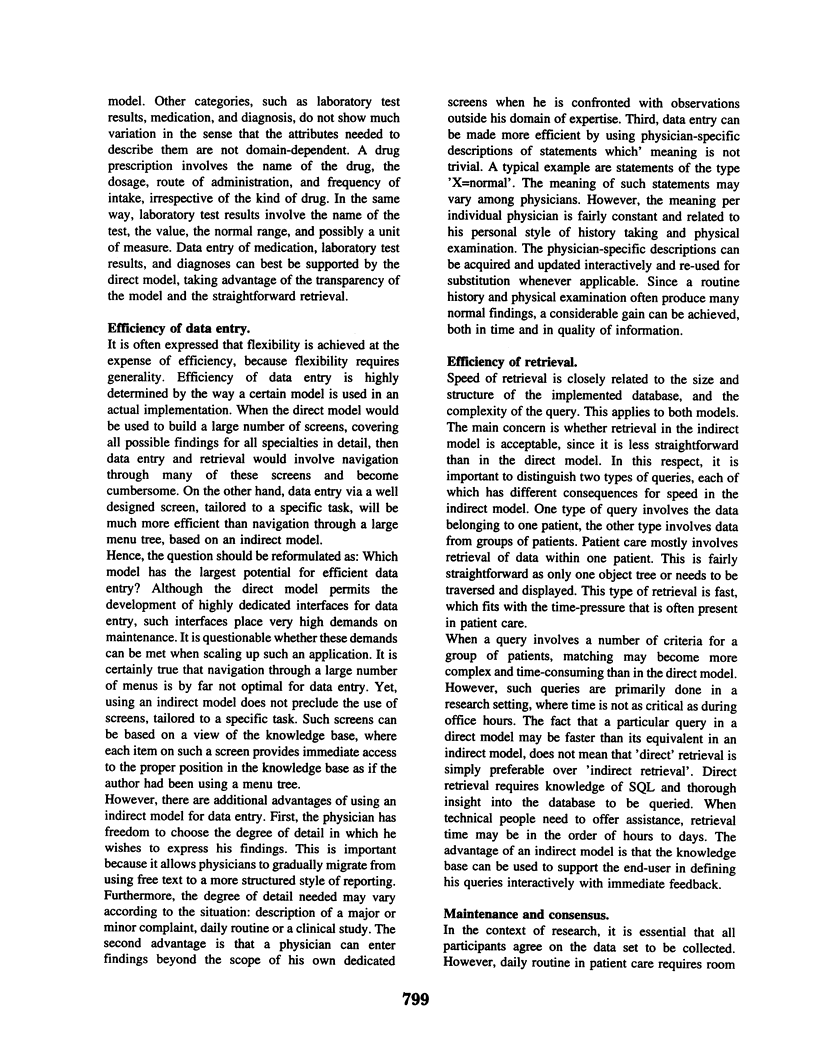
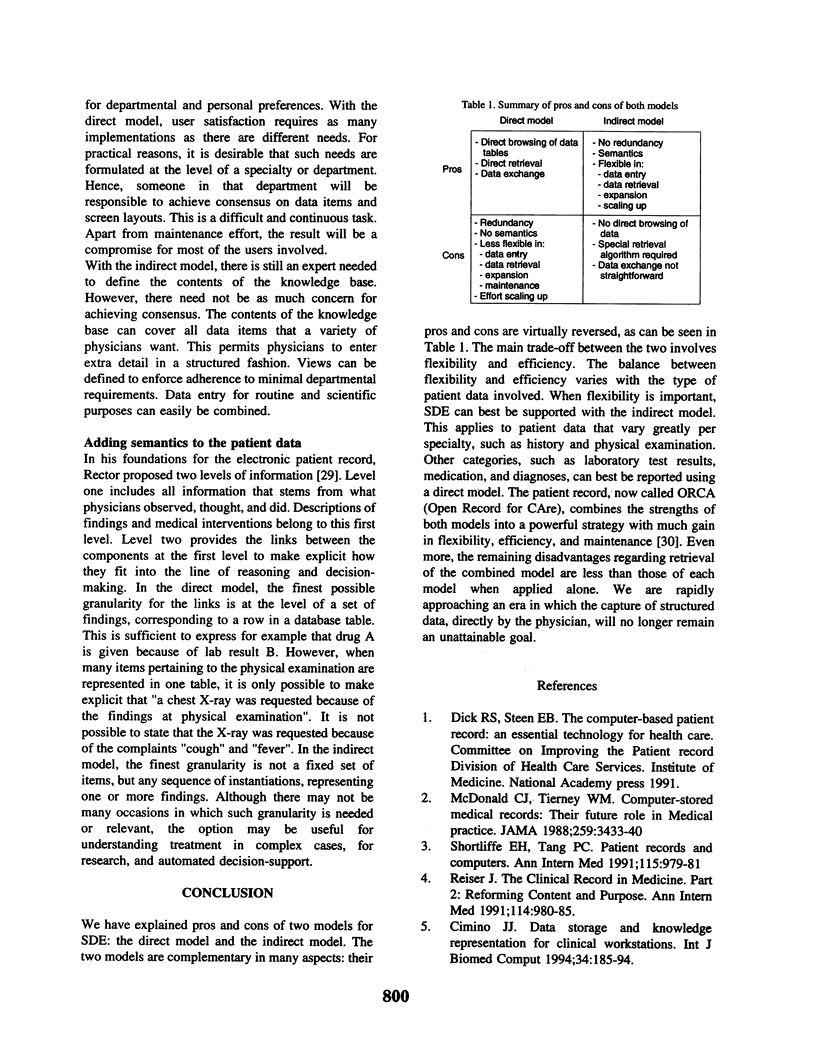
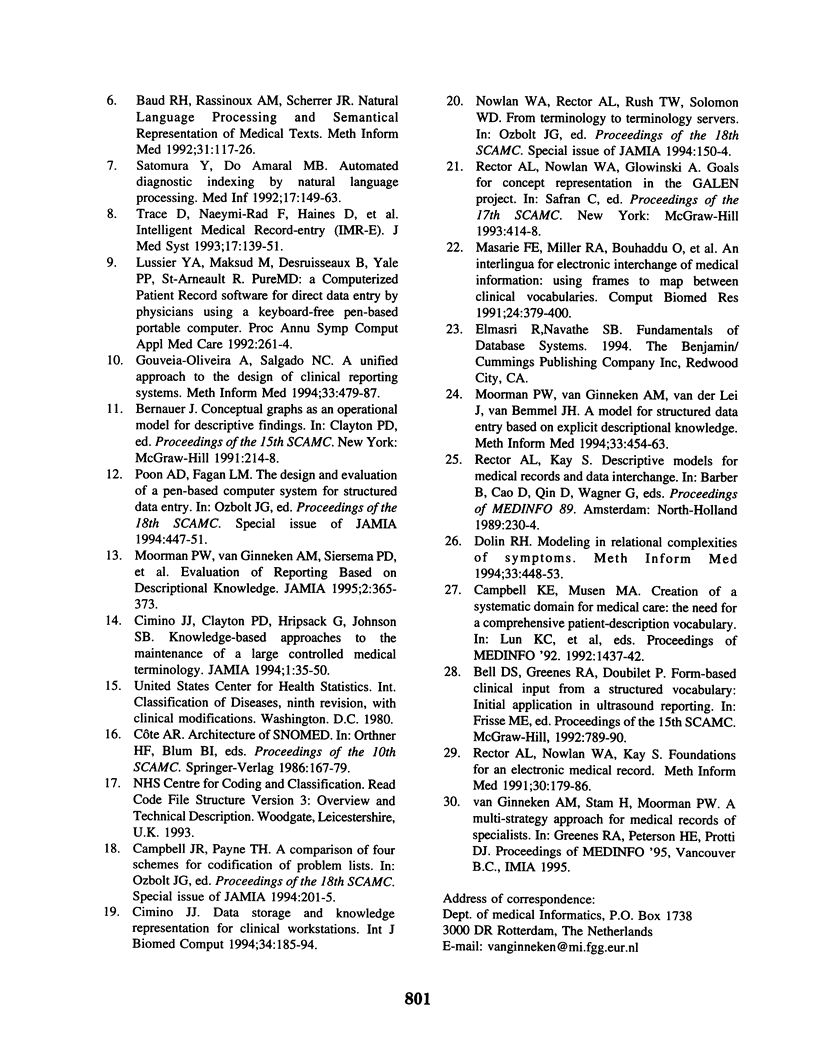
Selected References
These references are in PubMed. This may not be the complete list of references from this article.
- Baud R. H., Rassinoux A. M., Scherrer J. R. Natural language processing and semantical representation of medical texts. Methods Inf Med. 1992 Jun;31(2):117–125. [PubMed] [Google Scholar]
- Bell D. S., Greenes R. A., Doubilet P. Form-based clinical input from a structured vocabulary: initial application in ultrasound reporting. Proc Annu Symp Comput Appl Med Care. 1992:789–790. [PMC free article] [PubMed] [Google Scholar]
- Bernauer J. Conceptual graphs as an operational model for descriptive findings. Proc Annu Symp Comput Appl Med Care. 1991:214–218. [PMC free article] [PubMed] [Google Scholar]
- Campbell J. R., Payne T. H. A comparison of four schemes for codification of problem lists. Proc Annu Symp Comput Appl Med Care. 1994:201–205. [PMC free article] [PubMed] [Google Scholar]
- Cimino J. J., Clayton P. D., Hripcsak G., Johnson S. B. Knowledge-based approaches to the maintenance of a large controlled medical terminology. J Am Med Inform Assoc. 1994 Jan-Feb;1(1):35–50. doi: 10.1136/jamia.1994.95236135. [DOI] [PMC free article] [PubMed] [Google Scholar]
- Cimino J. J. Data storage and knowledge representation for clinical workstations. Int J Biomed Comput. 1994 Jan;34(1-4):185–194. doi: 10.1016/0020-7101(94)90021-3. [DOI] [PubMed] [Google Scholar]
- Cimino J. J. Data storage and knowledge representation for clinical workstations. Int J Biomed Comput. 1994 Jan;34(1-4):185–194. doi: 10.1016/0020-7101(94)90021-3. [DOI] [PubMed] [Google Scholar]
- Dolin R. H. Modeling the relational complexities of symptoms. Methods Inf Med. 1994 Dec;33(5):448–453. [PubMed] [Google Scholar]
- Gouveia-Oliveira A., Salgado N. C., Azevedo A. P., Lopes L., Raposo V. D., Almeida I., de Melo F. G. A unified approach to the design of clinical reporting systems. Methods Inf Med. 1994 Dec;33(5):479–487. [PubMed] [Google Scholar]
- Lussier Y. A., Maksud M., Desruisseaux B., Yale P. P., St-Arneault R. PureMD: a Computerized Patient Record software for direct data entry by physicians using a keyboard-free pen-based portable computer. Proc Annu Symp Comput Appl Med Care. 1992:261–264. [PMC free article] [PubMed] [Google Scholar]
- Masarie F. E., Jr, Miller R. A., Bouhaddou O., Giuse N. B., Warner H. R. An interlingua for electronic interchange of medical information: using frames to map between clinical vocabularies. Comput Biomed Res. 1991 Aug;24(4):379–400. doi: 10.1016/0010-4809(91)90035-u. [DOI] [PubMed] [Google Scholar]
- McDonald C. J., Tierney W. M. Computer-stored medical records. Their future role in medical practice. JAMA. 1988 Jun 17;259(23):3433–3440. [PubMed] [Google Scholar]
- Moorman P. W., van Ginneken A. M., Siersema P. D., van der Lei J., van Bemmel J. H. Evaluation of reporting based on descriptional knowledge. J Am Med Inform Assoc. 1995 Nov-Dec;2(6):365–373. doi: 10.1136/jamia.1995.96157829. [DOI] [PMC free article] [PubMed] [Google Scholar]
- Moorman P. W., van Ginneken A. M., van der Lei J., van Bemmel J. H. A model for structured data entry based on explicit descriptional knowledge. Methods Inf Med. 1994 Dec;33(5):454–463. [PubMed] [Google Scholar]
- Poon A. D., Fagan L. M. PEN-Ivory: the design and evaluation of a pen-based computer system for structured data entry. Proc Annu Symp Comput Appl Med Care. 1994:447–451. [PMC free article] [PubMed] [Google Scholar]
- Rector A. L., Nowlan W. A., Glowinski A. Goals for concept representation in the GALEN project. Proc Annu Symp Comput Appl Med Care. 1993:414–418. [PMC free article] [PubMed] [Google Scholar]
- Rector A. L., Nowlan W. A., Kay S. Foundations for an electronic medical record. Methods Inf Med. 1991 Aug;30(3):179–186. [PubMed] [Google Scholar]
- Reiser S. J. The clinical record in medicine. Part 2: Reforming content and purpose. Ann Intern Med. 1991 Jun 1;114(11):980–985. doi: 10.7326/0003-4819-114-11-980. [DOI] [PubMed] [Google Scholar]
- Satomura Y., do Amaral M. B. Automated diagnostic indexing by natural language processing. Med Inform (Lond) 1992 Jul-Sep;17(3):149–163. doi: 10.3109/14639239209096531. [DOI] [PubMed] [Google Scholar]
- Shortliffe E. H., Tang P. C., Detmer D. E. Patient records and computers. Ann Intern Med. 1991 Dec 15;115(12):979–981. doi: 10.7326/0003-4819-115-12-979. [DOI] [PubMed] [Google Scholar]
- Trace D., Naeymi-Rad F., Haines D., Robert J. J., deSouza Almeida F., Carmony L., Evans M. Intelligent Medical Record--entry (IMR-E). J Med Syst. 1993 Aug;17(3-4):139–151. doi: 10.1007/BF00996938. [DOI] [PubMed] [Google Scholar]


